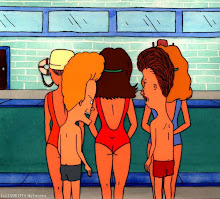I've been stuck for the past couple weeks trying to understand how to allow the arms of the old woman rig to function in either IK or FK mode at the touch of a switch. If you're unfamiliar with the difference, FK allows arm movement by rotating joints at the shoulder, elbow and wrist whereas in IK mode you simply reposition the wrist control and the rest of the arm falls into place accordingly. The difference in application is FK allows for more natural swinging motion of the limbs when the hand is free and IK allows your character to grab or pick something up more effectively.
I am definitely a novice at rigging. Even so, the construction of such a system shouldn't have taken any longer than any other step of the rigging, but due to the somewhat complex nature of switching constraints on and off there was a lot of room for human error, which I provided in abundance. After my first attempt the poor old lady's arms were helplessly contorting in a series of excruciating positions just from switching between systems. It was all FK'ed up! After much struggling, adjusting, deleting, reconstructing, testing, repeating, etc. I think I finally have the arms under control in both modes and the ability to switch from one to the next and back again at will. So here are lessons learned from trying to fix the mess I created.
THINGS ALWAYS GO WRONG: I was making quick and promising progress as I worked my way through the rig. Being my first attempt at creating a rig of this complexity I became cocky and eager to get this part of the project done with. The trouble I ran into with the arms was unanticipated and sort of devastating to my momentum. If I had stepped through the process a little more cautiously, not only would I have needed less time to grieve (and rage) over the speed bump, I may have avoided some of the mistakes that led to the problem.
TWO WRONGS DON'T MAKE A RIGHT: In a "time-saving" effort I attempted to patch holes in my malfunctioning arms as opposed to just starting over. What happened was every time I tried to fix one issue, two more popped up. If a joint moved out of placed in one mode I'd shift it back, if it twisted one way I'd twist the other way, if a value seemed to shift inexplicably I'd make connections where they didn't belong. Hours and hours of trying to counter bad mistakes with bad adjustments just to avoid deleting my precious work. In the end, I spent a lot more time trying to noodle with something I knew was broken than I did rebuilding an arm that worked from scratch.
YOU LEARN MORE WHEN YOU SCREW UP: I've basically been following step-by-step instructions to complete this rig. When I ran into problems a large part of my horror was due to the fact that I was suddenly responsible for fixing this thing on my own. I had to go through a painful process of trial and error, constraining one thing to the next in a variety of ways. As I went I became very familiar with how each change I made would effect the rig. By the time I ran my last test to see if everything worked I was already confident that it would. My final tweaks were handled quickly since I knew exactly what wasn't working and how to fix it. If I hadn't had to fix these damn arms on my own I would not be able to say I could construct a rig of this nature without some form of direction. Now, with enough time, I think I could probably work my way through just about any simple character rig.
I see my next two greatest challenges as being the facial controls and the skirt, since I'm still uncertain how these are going to be pulled off. There's still a lot more to do, and a lot more potential missteps to be had. I feel a little more confident about the whole project than I did before now that I apparently conquered the arms.
Sunday, March 13, 2011
Subscribe to:
Post Comments (Atom)

No comments:
Post a Comment